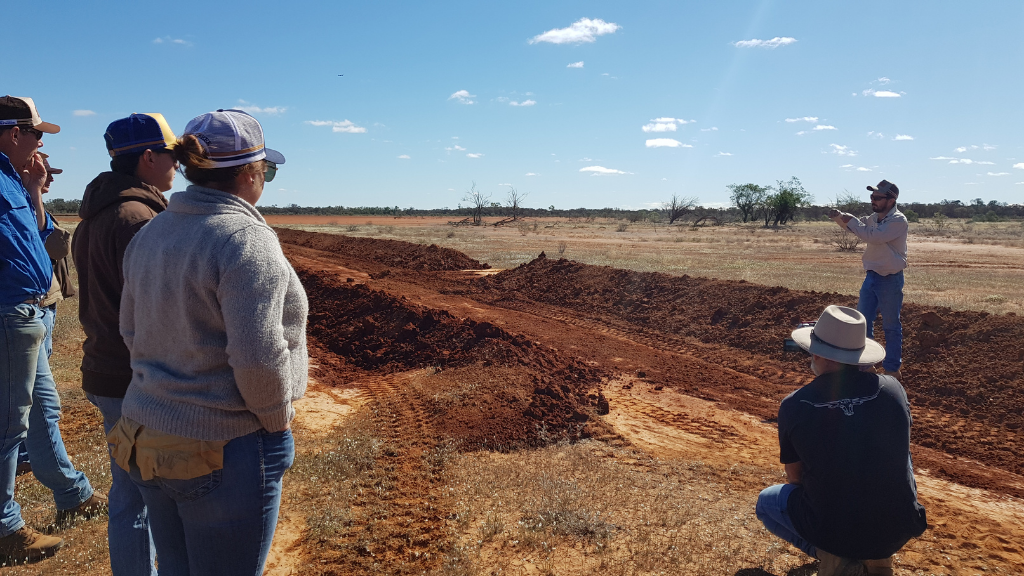A report by Southern Queensland Landscapes Senior Project Officer, Christine Crafter
A great rollup of locals joined Southern Queensland Landscapes at Garrawin and Wandilla Stations near Eulo recently for a floodplain restoration day. Attendees got to see different types of works that can be used to rehydrate landscapes and shared their own experiences about recovering floodplain function on their land.
Glenn Landsberg led a discussion that included:
- Reading the landscape to identify where erosion was causing issues
- Identifying the best places to control erosion and improve landscape function,
- Laser levelling and marking out of the land
Mark Luckraft, owner and operator of Luckraft Earthworks used his grader to demonstrate some of the techniques of spreader bank construction and other earthworks to help repair scalded flats. A scalded flat is an area of land where water runs off the ground and strips it of soft, top soil. All that remains is hard, compacted soil.
After lunch, the party headed to Wandilla Station to inspect the results of timber windrows that were constructed on a scalded floodplain to slow water flow over the landscape. The results showed that the timber windrows have worked to slow the high velocity flood flows, which resulted in a reduction of soil loss, allowing vegetation to establish in areas where previously nothing would grow.
The attendees shared their own knowledge and experience to consider the different methods and materials for landscape rehydration as they looked at an area needing repair. The group discussed their thoughts on how to fix the erosion and rehydrate the surrounding flats. Great discussion came out of this exercise.
Overall, the day was a fantastic example of collaborative information sharing among participants, with everyone walking away with something new to try at home.
Thanks to Ian and Sandy of Garrawin (Sustainable Land Management - SLM) and David and Carmel of Wandilla for opening their properties for the day and sharing their restoration efforts with us.
Also thanks to Mark and Tay of Luckraft Earthworks for sharing their construction skills and providing their grader for the practical demonstration of the works.
And thanks to all the participants for sharing their own varied experiences and aspirations.
Southern Queensland Landscapes is currently undertaking floodplain restoration works in the Paroo River catchment, which will contribute to improving water quality and landscape condition by:
- Slowing the flow of floodwater and stormwater
- Reducing soil loss
- Promoting groundcover and pasture
- Enhancing floodplain and wetland function on both private and public lands including the Currawinya Ramsar Wetlands
Download the Low Profile Contour Bank technical sheet here: https://irp.cdn-website.com/1018ad9f/files/uploaded/SQL_Tech%20Sheet_Low%20Profile%20Contour%20Bank_A4_WEB.pdf
If you’re interested in learning more about our Floodplain Restoration Days or where the next one will be held, get in contact with Southern Queensland Landscapes.
–
This project is supported by Southern Queensland Landscapes through funding from the Australian Government’s National Landcare program and the Queensland Government’s Natural Resource investment program.











